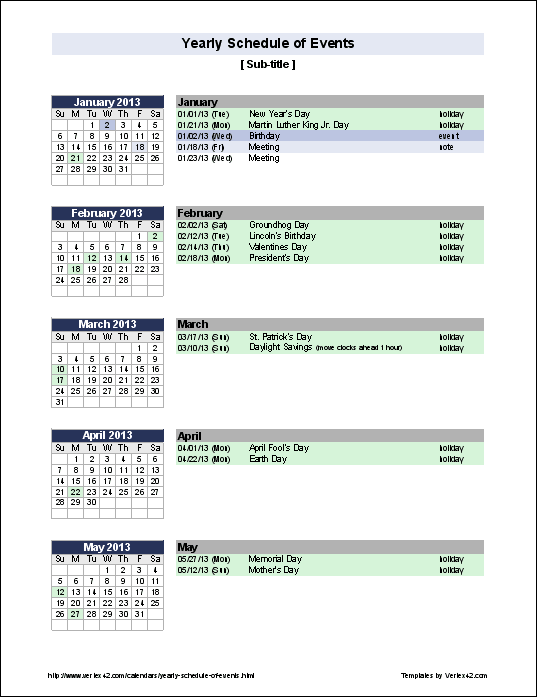Are you a student navigating through the realm of A day and B day schedules? Don’t worry; we’ve got you covered! In this blog post, we will unravel the mysteries behind A day and B day schedules, offering a comprehensive explanation to put your confusion to rest. Understanding the intricacies of these schedules is crucial for effective time management and academic success. Whether you are a high school student, a college attendee, or a parent curious about your child’s school routines, this blog will provide valuable insights and clarity on how these scheduling systems work. So, get ready to dive in and demystify the complexities of A day and B day schedules!
Introduction to A Day and B Day Schedule
Understanding an A Day and B Day schedule is essential for students, teachers, and parents alike. This scheduling system, commonly used in schools, alternates the classes or subjects a student attends on different days. On an A Day, a student will have a specific set of classes, while on a B Day, they will have a different set of classes. This rotation allows for a more diverse curriculum and ensures that students receive instruction in all subjects regularly.

Benefits of A Day and B Day Schedule
One of the primary advantages of an A Day and B Day schedule is that it helps prevent burnout and fatigue by breaking up the monotony of attending the same classes every day. This system also allows for longer class periods, enabling more in-depth learning and engagement with the material. Additionally, it provides teachers with extended time for activities such as labs, group projects, and discussions.
Implementation of A Day and B Day Schedule
To effectively implement an A Day and B Day schedule, schools need to carefully plan their curriculum to ensure that all subjects receive adequate instructional time. Teachers must coordinate their lesson plans to fit within the alternating schedule, and students need to stay organized to keep track of their classes on A and B Days. Schools may also need to adjust transportation schedules and extracurricular activities to accommodate the new timetable.
Understanding the Concept of A and B Days
In educational institutions, the A and B Day schedule is a common way to organize classes efficiently. A Day and B Day schedules are used to alternate between different sets of classes on different days, allowing students to cover a wide range of subjects without becoming overwhelmed.
The Purpose of A and B Days
A Day typically consists of specific classes while B Day consists of a different set of classes. This alternating schedule helps students focus on a smaller number of subjects each day, leading to better concentration and understanding of the material.
Benefits of A and B Day Schedules
By following an A and B Day schedule, students can avoid information overload and burnout. The system provides educators with more time for in-depth instruction and student engagement, ultimately enhancing the learning experience.
- Improved Focus: A dedicated day for specific subjects allows students to concentrate better.
- Balanced Learning: Distributing subjects across A and B Days ensures a balanced curriculum.
- Effective Teaching: Teachers can plan lessons more effectively with longer class periods.

Benefits of A Day and B Day Schedules
A Day and B Day schedules have become increasingly popular in educational institutions in the current year. These schedules alternate classes for students, allowing them to focus more deeply on each subject. Here are the key benefits:
Improved Focus and Learning
With A Day and B Day schedules, students can concentrate on a limited number of subjects each day, leading to improved focus and better retention of information.
Reduced Stress and Workload
By spreading out classes over two days, students have more time to complete assignments and study for exams, resulting in reduced stress levels and a more manageable workload.
Enhanced Time Management Skills
These schedules help students develop time management skills as they learn to prioritize tasks within a given day, ensuring they stay organized and on track.

Implementing A Day and B Day Schedule in Schools
Implementing an A day and B day schedule in schools has become a popular method to manage classes and student schedules efficiently. This system divides the school week into two alternating days, where students attend different classes based on the day of the week. It helps in reducing the number of classes a student attends each day, allowing for longer class periods and more focused learning.
Benefits of A Day and B Day Schedule
One of the significant benefits of the A day and B day schedule is the reduced daily class load on students, which can help prevent academic burnout. Alternate day scheduling also allows teachers to delve deeper into subjects during longer class periods, promoting better understanding and engagement.
Implementation Process
Schools typically implement the A day and B day schedule by assigning specific classes to each day, ensuring a balanced distribution of subjects throughout the week. This helps students manage their coursework more effectively and provides educators with extended instructional time.
- Developing a detailed timetable
- Communicating the schedule clearly to students and parents
- Adjusting extracurricular activities to align with the new schedule
Challenges and Solutions
When managing an A day and B day schedule system, educational institutions often face various challenges that need effective solutions to ensure smooth operations and student engagement.
1. Scheduling Conflicts
One common challenge is handling scheduling conflicts that may arise due to overlapping classes or activities on A and B days. To address this issue, schools can implement a robust scheduling software that automatically assigns classes, breaks, and extracurricular activities to specific days, reducing conflicts.
2. Student Attendance Tracking
Tracking student attendance accurately on both A and B days can be tricky. Schools can overcome this challenge by leveraging advanced attendance management systems that offer real-time tracking capabilities. These systems help in monitoring student presence and absence efficiently.
3. Curriculum Planning
Aligning the curriculum with the A day and B day rotation can be demanding for educators. One solution is to create detailed curriculum maps that clearly outline what topics will be covered on each day, ensuring comprehensive coverage of the syllabus over the entire schedule.
Frequently Asked Questions
- What is a Day A and Day B schedule?
- A Day B Day schedule is a type of school schedule where students alternate between attending classes on A days and B days. This setup allows for longer class periods and more focused learning.
- How does a Day A and Day B schedule work?
- On a Day A and Day B schedule, students attend their A day classes on one day and their B day classes on the next day. This rotation continues throughout the school year.
- What are the benefits of a Day A and Day B schedule?
- One of the benefits of a Day A and Day B schedule is that it allows for more in-depth learning during longer class periods. It also provides a structured routine for both students and teachers.
- Are there any drawbacks to a Day A and Day B schedule?
- While Day A and Day B schedules have their benefits, some students may find it challenging to keep track of which day is an A day and which is a B day. It can also require some adjustment to get used to the alternating schedule.
Unlocking the A Day and B Day Schedule
In summary, the A Day and B Day schedule offers a structured approach to organizing school days, providing students and teachers with clear routines and consistency. By alternating between A and B days, students can engage in a variety of classes without feeling overwhelmed. This system promotes a balanced curriculum, allowing for in-depth learning while preventing fatigue. Understanding the differences between A Day and B Day can help students optimize their study schedules and manage their time effectively. As we dive deeper into the intricacies of these schedules, remember that consistency and planning are key to success in navigating the academic calendar.
